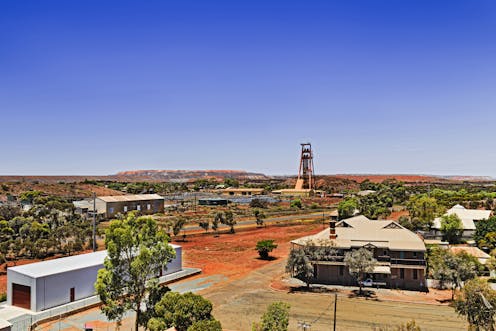Sydney the most expensive capital in Australia, Perth comes in fifth: new report
- Written by Rachel Ong, Deputy Director, Bankwest Curtin Economics Centre, Curtin University

People have been spending more in New South Wales in recent years, followed by Victoria, South Australia, Queensland and Western Australia, according to a new report. And while real household spending has climbed by 14% in NSW between 2009-10 and 2015-16, it only rose by 4% in WA over the same period.
While spending soared, the price of goods also rose over the same period. The consumer price index (CPI) in Sydney rose by 16.4% - again the highest among all capital cities - followed by Melbourne, Brisbane, Perth (15.1%), and Adelaide.
But the preceding six-year period tells a very different story. Between 2003-04 and 2009-10, growth in real household spending spiked at 25% in WA and Queensland, but other population centres experienced much slower spending growth.
These state and territory differences reflect the workings of a “two-speed economy”, where people’s spending levels are more sensitive to the ups and downs of the economic cycle in the resource-rich states of WA and Queensland.
The report compares prices and spending across Australian states and capital cities, drawing on a range of data sources.
What drives cost of living in the most and least expensive cities?
There’s also similarly wide disparities in cost-of-living patterns across our major capital cities. Sydney ranks as the most expensive, followed by Melbourne, Brisbane, Adelaide and Perth.
Perth’s ranking jars against the popular perception that it is one of the most expensive cities in Australia.
Sydney’s ranking as the most expensive city is mainly driven by increases in housing and education costs, which have risen by 5.7% and 5%, respectively, between 1995 and 2017.
Housing makes up one-quarter of households’ spending – the dominant share. So it’s no wonder that rises in housing prices in Sydney are so keenly felt.
Price increases have been much slower in Perth relative to other capital cities, in the areas of food and non-alcoholic beverages, transport and communication. Growth in wages has outpaced the growth in prices of goods in WA, more than in any other state and territory over the past 15 years.
Financial stress acute for some in WA
While people in WA might be spending less, there are still segments of the population that are vulnerable to intense cost-of-living pressures.
It’s clear that households in severe financial hardship are having to divert increasing shares of their household budgets to meet housing needs and utility costs. We define households in severe financial hardship as those who have had to seek financial assistance from family, friends or welfare institutions and those that could not eat or heat due to money shortages in the last year. During 2015-16, these households diverted around 39% of their budget to housing alone. This was higher than the 25% typical WA household spend on housing.
In order to spend more on housing, households in severe financial hardship are cutting back on other discretionary spending. These households are trading off transport and health spending to meet housing needs.
We found the cutback on transport spending becomes more prominent over time. During 2015-16, the budget share that stressed households diverted towards transport was only 4%, compared with 11% for a typical WA household.
Housing costs comprise an even bigger share for WA households seeking financial counselling (around half), than the broader group of households in severe financial hardship (39%). For households seeking financial counselling, the size of a mortgage is likely to be the reason they are in financial trouble.
WA households seeking financial counselling spend on average well over half (55%) of their weekly budget on housing alone (versus 44% spent by the renters). Housing costs are clearly the largest cost and biggest risk factor for financial hardship, well ahead of food (18%), transport (10%) and utilities (5.5%).
Households who sought financial counselling spend even less of their budget shares on health (3.6%) than the broad group of households in severe financial hardship (4%).
Overall, the typical WA household has continued to fare reasonably well in recent years, with incomes rising much faster than living costs. Yet the same is clearly not true for vulnerable groups within our community.
Those on low incomes have struggled in recent years to keep up with the cost of living. The cost of housing has emerged as the greatest single living cost for most Australian households and the most critical factor in the risk of financial hardship, poverty and inequality within our community.
Policy makers need to tackle the vexed issue of housing affordability if they wish to have an impact on poverty and financial resilience and ensure fewer vulnerable members of our community are left behind.

